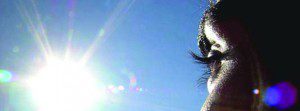 Living or vacationing in the Sunshine State can provide the most exhilarating memories you could ask for. This state offers unlimited ways to have fun on, near, or under the ocean. To an outsider, Florida seems like absolute paradise and, for the most part, it is. However, one can always grasp the yin and the yang to every perspective.
Living or vacationing in the Sunshine State can provide the most exhilarating memories you could ask for. This state offers unlimited ways to have fun on, near, or under the ocean. To an outsider, Florida seems like absolute paradise and, for the most part, it is. However, one can always grasp the yin and the yang to every perspective.
However, Florida still has its share of dangers that shouldn’t be overlooked. As anyone who has lived here for awhile will tell you, you might experience the surprise of meeting up with a black bear while taking out the trash or coming across a “new age” dinosaur if you spend too much time fishing in a canal. Even a rare sighting of the Florida panther can make you take pause. Yes, there are definitely dangers all around us, but the most dangerous and least recognized is probably the sun itself. While people flock to the Sunshine State for, yes… the sunshine, most won’t adequately protect themselves against its punishing rays.
Sunscreen gives us great protection, but only for one part of body. We often overlook some of our most important assets; our eyes. When rushing to the beach, it is probably a given to remember our sunblock. Yet, how many times have we accidently left those fancy sunglasses in the car? There are several types of UV rays to be concerned with. UVC rays are the most extreme, but the majority of the time our atmosphere blocks these rays from reaching us. UVB rays also have a difficult time getting through the atmosphere, although more of these make it through than UVC rays. UVB rays are the ones responsible for giving us a suntan or a sunburn. Finally, the UVA rays are the ones that can reach the lens and retina of our eyes.
We have to be very careful and protect our vision from these invisible foes. The unintended results of allowing prolonged sun exposure to our eyes can be vision loss, cataracts, macular degeneration, snow blindness, or eye cancer. Macular degeneration is damage to the retina over a period of time, but excessive exposure to UV rays can speed up this process. Snow blindness is temporary vision loss due to double exposure of sunlight to your eyes by rebounding off white snow or white sand. The scientific term for this is photokeratitis and usually feels like a painful sensation of sand in the eye.
Some other signs and symptoms to be aware of are bumps on the eyelids, constant irritation, or eye lashes falling out. These can all be caused from cancer and should be taken seriously. Being a resident of our beautiful state, it is important to practice proper eye care. According to the American Academy of Ophthalmology, everyone should get their eyes checked by the age of forty. Locally, Dr. Kazim of Bonita Springs has been preaching the importance of proper eye protection for years. Make sure that your sunglasses provide a minimum of 98% UV blockage. Otherwise, those glasses are just a fashion statement.
As with everything, we take our eyesight for granted until we lose it. Don’t let something as simple as wearing the correct sunglasses come between you and your vision. If you have any questions or concerns regarding your vision or the effects of UV damage to the eyes, you can contact Dr. Kazim at (239) 494-4900. Her clinic is located at 3501 Health Center Blvd., Ste 2170 in Bonita Springs. She is a recognized expert in the field and is a renowned ophthalmic plastic surgeon.
Dr. Nadia Kazim is an ophthalmic plastic surgeon and a proud member of the American Society of Ophthalmic Plastic and Reconstructive Surgery. She is board certified and fellowship trained. Her office is located in the Bonita Community Health Center in Bonita Springs, FL. Call or visit www.KazimEyelidSurgery.com for more information.
(239) 494-4900 . www.KazimEyelidSurgery.com








